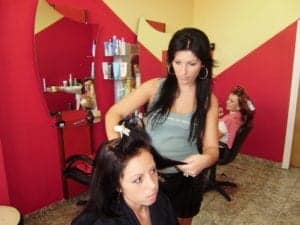What happens when a financial institution decides to start giving individual loans to women, but finds hardly any takers? I remember the time, about 10 years ago, when a leading Women’s World Banking network member in Bosnia-Herzegovina introduced individual lending for its clients. The staff members of that organization, MI-BOSPO, were surprised that they couldn’t find any women entrepreneurs interested in taking a loan. After digging more deeply, the management learned that local women felt this product was not for them. It turned out that women in the region were more used to taking out group loans, and were concerned that the process of qualifying for an individual loan would be complicated and intrusive. They flinched at the thought of a loan officer coming to their home and asking questions about their business activities.
Our network member in Egypt, Lead Foundation, faced a similar challenge. The Women’s World Banking team worked with Lead to find out why the organization wasn’t reaching enough women business-owners with its loan products. One issue that stood out was the nearly all-male staff of loan officers employed at Lead at the time. Because of local cultural taboos, male loan officers could not complete a key step in the loan process: going into homes to speak with women about their credit offerings and to assess eligibility.

For both of these institutions, and for the many more examples in nearly every region in the world where Women’s World Banking has conducted research, the overarching problem is clear: In order to successfully offer individual loans to women entrepreneurs, a more targeted approach must be in place, both to reach women and to create effective, sustainable loan products for them. Individual loans are a different proposition altogether from group loans and present a significantly different set of challenges for financial institutions accustomed to the group loan methodology. Individual loan products must be created and administered using a custom-designed methodology, because they must take into account clients’ specific business needs.
 In our new Women’s World Banking guide, “Individual Lending for Low-Income Women Entrepreneurs: An Inclusive Approach,” we’ve mapped out a strategy that not only describes how to design loan products that meet the needs of low-income women entrepreneurs in developing countries—about 46-56% of whom are unbanked or underbanked—it also explains how to support those loan products with a sound marketing plan, and provides a thorough description of the changes or adjustments required in the institution’s operating model.
In our new Women’s World Banking guide, “Individual Lending for Low-Income Women Entrepreneurs: An Inclusive Approach,” we’ve mapped out a strategy that not only describes how to design loan products that meet the needs of low-income women entrepreneurs in developing countries—about 46-56% of whom are unbanked or underbanked—it also explains how to support those loan products with a sound marketing plan, and provides a thorough description of the changes or adjustments required in the institution’s operating model.
As we’ve found in our work with financial institutions worldwide, the most well-engineered loan products will fall flat if the target audience is not interested or does not know the product exists. In order to launch successful individual loan products that address women’s needs, institutions must market specifically to women, and adapt nimbly to local circumstances. Institutions will need to retool their operations so they can tailor their products and services to women entrepreneurs at every stage of their business, and nurture long-term relationships with those clients.
Introducing individual lending is transformational and often requires a shift in the culture of the institution, a shift that can only be achieved if there is a very strong commitment from leadership and management. A great deal of time and focus will be required at all levels of the organization. Institutions will need a clear strategy, continuous communication from leadership, openness from management to process changes, and ongoing training for staff. Most of all, they will need patience, because a change of this magnitude will take time.
An institution’s operating model will have to be changed in ways that can vary significantly depending on the region where it’s based, and on the nature of the institution—for instance, whether it’s an NGO or a bank. Each institution will need to focus on how women live in that country, and to understand the typical roles and responsibilities within the family. It will also be crucial to take into account the specific regional constraints and barriers that women face, and to take steps to eliminate gender stereotyping—which can occur at the initial interview, during the application process, at networking events, during loan committee meetings with senior management, or at any time throughout the daily operations of the institution. Institutions need to develop and conduct training for loan officers, senior management, directors, and support staff to mitigate the risk of gender stereotyping, often unintentional.
When it comes to individual lending for women entrepreneurs, it is necessary to take a more holistic approach and understand that the client is an individual customer with specific needs. It is only when institutions understand women entrepreneurs in this way, and as valuable clients in their own right, that they can truly serve them.




